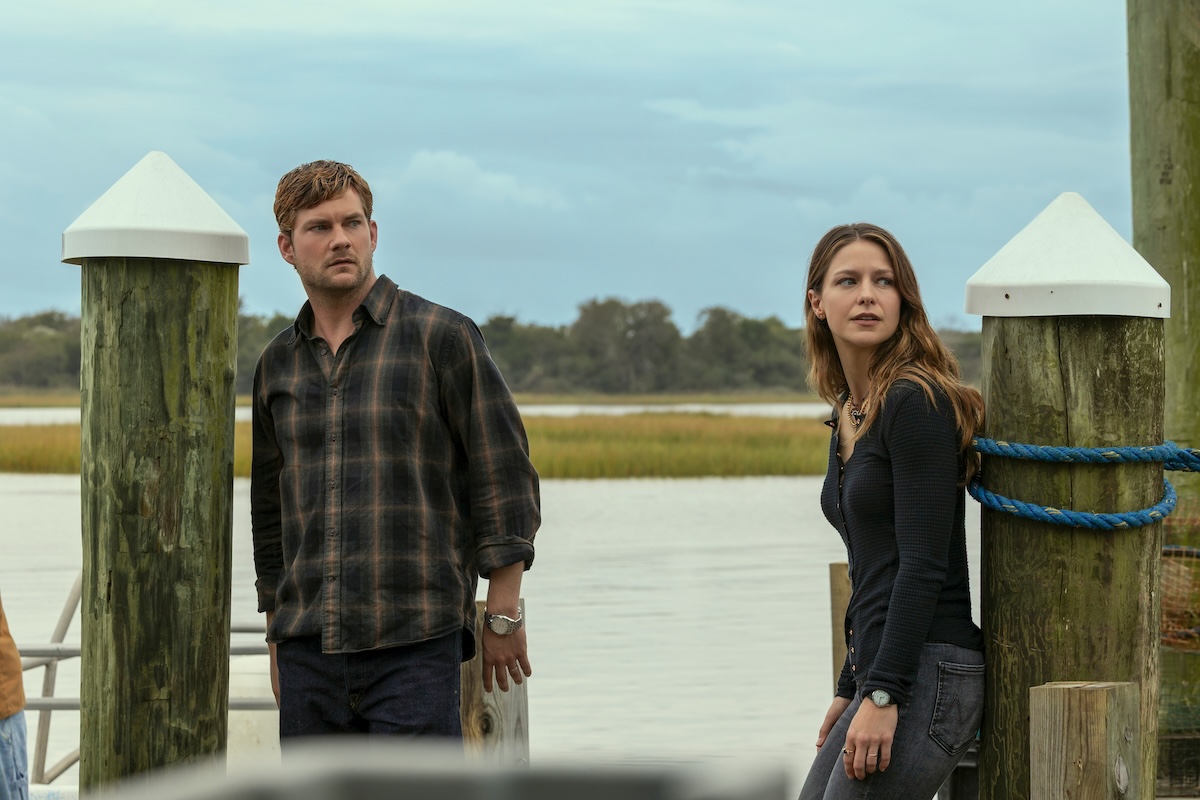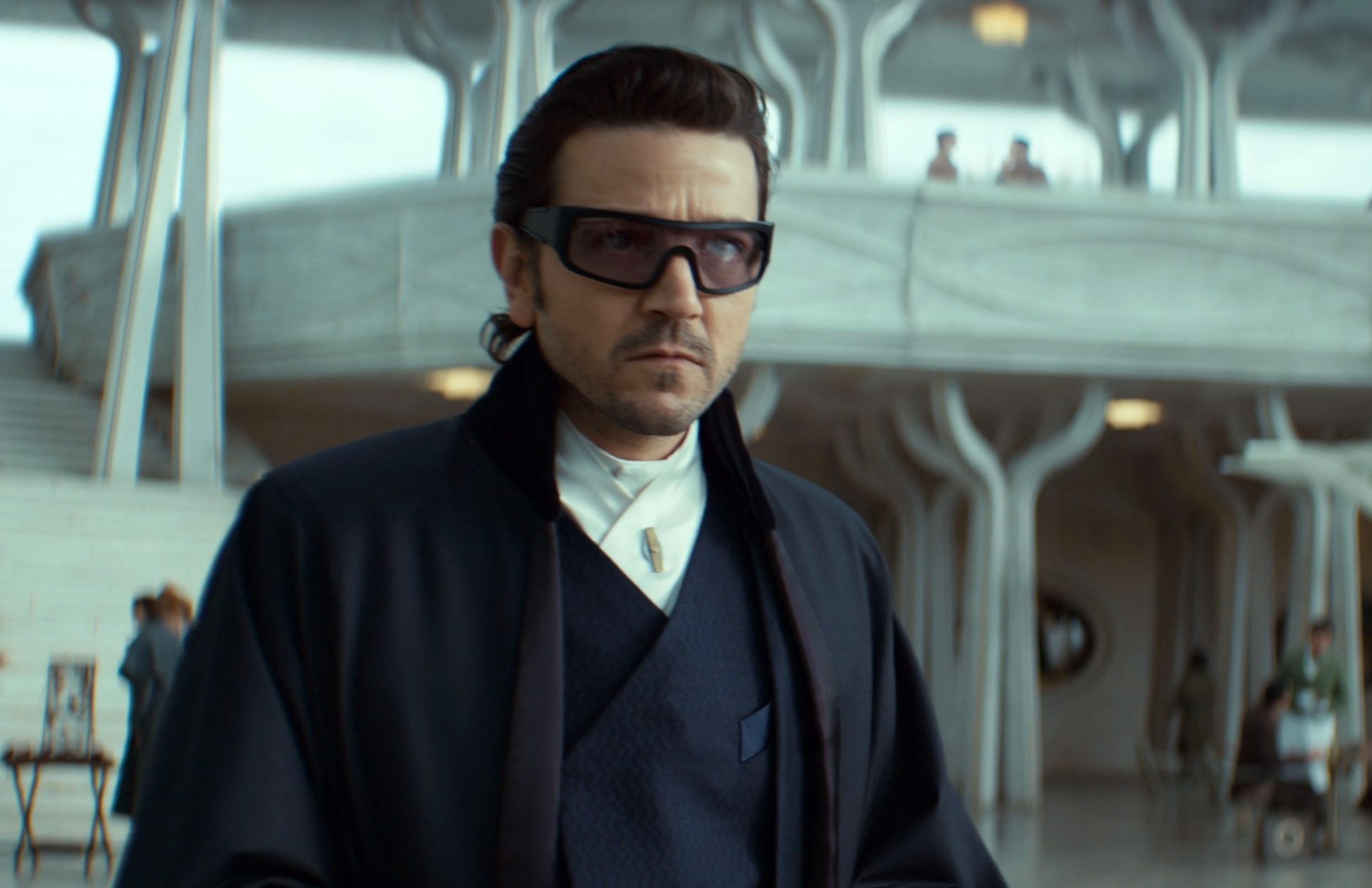“The Waterfront,” a new Netflix series about a family-run fishery off the North Carolina coast, officially stems from “Dawson’s Creek” and “Scream” scribe Kevin Williamson, but given the first season’s shallow interest in its own characters, setting, and premise — combined with its unmistakable similarities to recent TV hits — the creator credit may as well be shared with the streamer’s oft-vaunted algorithm. Even if “The Waterfront” wasn’t pointedly conceived to pop up after “Ozark” (and thus also prevent subscribers from a far worse fate: opening a separate streaming app to watch five seasons of “Yellowstone”), the sloppy drama would still be little more than Netflix sludge: recognizable ideas, actors, and intentions tossed together in a functional story that slowly but steadily sours into overtly redundant dreck.
So first, let’s look at what “The Waterfront” so clearly aspires to be, shall we? “Ozark” begins with an enthralling sense of urgency. Marty Byrde (Jason Bateman), a family man working a white-collar accounting job in Chicago, has been skimming money for years from his top client — a Mexican drug cartel — and now they’ve finally caught on. Exposed to a level of violence foreign to his cushy suburban life, Marty makes a desperate plea to save his own skin: He promises to launder hundreds of millions of dollars for the cartel by establishing an outpost in the Ozarks (and, as an after-thought, he also might win back the wife who wants to leave him and the kids who are already drifting away).
“Yellowstone,” meanwhile, trades in “Ozark’s” urgency for an enrapturing sense of place. Instead of being forced to flee his home and start over somewhere new, John Dutton (Kevin Costner) digs in his boot heels. He, too, is a family man, and he, too, sees his loved ones slipping away. But his greatest fears are existential. He’s losing his legacy: the Dutton family ranch, and writer/director Taylor Sheridan makes it easy to see what a loss that would be by framing the Yellowstone-adjacent site as America’s Holy Land — rolling green pastures, gurgling blue rivers, free-roaming cattle — and Dutton as its dying steward. Despite health issues and growing financial pressure, John guards his forgotten corner of a lost way of life knowing full well it could cost him his own.
“The Waterfront” features many of these facets, but it takes our investment for granted. Unlike “Ozark,” the story starts with minimum urgency. A drug hand-off goes bad, when a couple of nameless sailors get robbed, beaten up, and thrown overboard while waiting to unload a few dozen crates of cocaine. Turns out the deceased were working for Cane Buckley (Jake Weary), the heir apparent to the Buckley family fishing operation who’s been prematurely elevated to the top spot while his father, Harlan (Holt McCallany), recovers from his second heart attack.
Cane’s decision to start shipping drugs is meant to be the series’ impetus: Pushed to the brink by his family’s growing debts, the dumb son of a brilliant businessman makes a massive mistake that forces the family to temporarily take up a life of crime (just until they’ve balanced the books). OK, that’s definitely a show born from Ted Sarandos’ bored musings — it’s easy enough to imagine him scribbling “Ozark” + “Yellowstone” on a cocktail napkin during the Golden Globes — but it’s still a formula that’s works.
Except in Williamson’s telling, the family already has a background in smuggling drugs. Harlan did it for years because his dad did it before him, which makes Cane’s choice less stupidly desperate and more stupidly fated. Harlan bitches and moans about Cane’s foolish endeavor, but the Buckleys take to the drug trade like ducks to water — because they are and have always been drug-trading ducks who live on the water. Each week, a few trips to the open ocean get added to their shared Google calendar, but their lives otherwise continue uninterrupted. There’s no stressful money-laundering learning curve, no awkward interactions with the locals, and no competency porn regarding how they get away with it. What’s left is a flavorless, ill-defined routine, and a ho-hum routine isn’t the stuff of great drama.
OK, fine. “Yellowstone” didn’t depend on an off-to-the-races opening either, and it turned out… uh, it was very successful. Maybe “The Waterfront” will actually be about the waterfront. The Buckleys, after all, don’t just catch, clean, and distribute fish. They have cousins all over town, and they own their own restaurant overlooking the ocean that’s run by Harlan’s wife, Belle (Maria Bello). His daughter Bree (Melissa Benoist) works there, too, but after watching all eight episodes, I still can’t tell you how her job differs from her mom’s.

Maybe the redundancy is intentional, since Bree rarely works and may have missed whatever few shifts she’s assigned while in rehab. A self-described alcoholic and “pillhead,” Bree isn’t clued into the family’s illicit side hustle — a separation that’s barely justified onscreen but could be easily explained by plot details I’m barred from discussing. Officially (and shared in terms vague enough that Brie doesn’t really know what she’s asking to be let in on), she has to prove she’s serious about her sobriety before she can transfer from restaurant “manager” to cocaine trafficker, not that such a move would help win back her son, Diller (Brady Hepner), whose father took out a restraining order against his ex-wife when she burned down their house — with Diller inside.
(Side note: No matter how propulsive or immersive, there isn’t a TV drama in existence that could get me to accept the given name “Diller.” Did they name him after a billionaire? A comedian? A pickle? Or perhaps a sweet treat at Dairy Queen? Please, prospective parents out there, let the vast disparity of potential inspirations serve as warning enough to choose a different moniker. If “The Waterfront” was a comedy or a satire? Sure. But a humorless crime saga where a terrified mother shouts “Diller” with the same emotional intensity as Ellie crying out for Joel? Absolutely not.)
Despite the Buckleys’ luxurious waterfront property and small fleet of shiny shipping vessels, “The Waterfront” never bothers to emphasize what makes Havenport, North Carolina — or its esteemed fishery — so special. Episode 1 director Marcos Siega (known for “Dexter,” “Dexter: New Blood,” and the upcoming “Dexter: Resurrection,” in addition to Williamson favorites like “The Vampire Diaries” and “The Following”) primarily frames scenes in close-up, like the conventional TV of yore, rather than strive for the “cinematic” scene-setting that convinced so many “Yellowstone” viewers to visit Montana. There’s a boat here and a beach there, but the visual template evokes impersonal wealth more than any specific place. Perhaps a perpetual light breeze is indicative of coastal North Carolina (and nowhere else)?
As for the interpersonal succession drama that made “Yellowstone” the populist replacement for actual “Succession,” “The Waterfront” lacks the existential anxieties that plagued John Dutton (and Logan Roy), as well as the friction created by a family that doesn’t abide by daddy’s designs. There’s a tinge of disapproval in how Harlan sees his timid son, but it’s nothing close to the mutual scorn that drove so many blow-ups and near-reunions between John and Jamie (Wes Bentley), let alone Logan (Brian Cox) and any of his children. The Buckleys want to get along, which would be fine — a crime drama built around nice, loving family of criminals could, theoretically, be interesting — except their fluctuating feelings make it difficult for any of their fights to leave a mark. (A spoiler-free example: Harlan doesn’t even bother hiding how often he cheats on his wife, and she doesn’t care, which makes some of the season’s soapier twists feel that much emptier.)
Early on, the family’s motivation for breaking bad is written off far too quickly and never revisited: “You know what Cane’s up against,” Belle says. “Overfished waters, environmental quotas, gas prices.” OK… so show us that! Get some predatory fishermen involved who are encroaching on the Buckleys’ cherished waters. Toss in an uncaring government agent with an axe to grind. Watch Belle or Bree sweating over the books, firing staff, or otherwise struggling with the daily grind of running the family’s beloved business. Make us feel how hard they’re working to earn all that money the right way, rather than how easy it is to traffic cocaine.
Instead, “The Waterfront” cooks up bland, predictable melodrama (like Cane’s high school sweetheart moving back to town) and random, extravagant violence (like a brief but brutal torture sequence midway through the season). Alluding to its desired audience, most of the show is set to a country-rock soundtrack, including a particularly bloody scene conversely set to Rodney Atkins’ wholesome anthem, “True South.” Like the rest of the show, it’s all vibes and no soul.
But that’s just how it goes in “The Waterfront.” Nothing that’s heard has to mean anything, it just has to sound like it does. Nothing that happens has to evoke any real emotions, it just has to remind you of shows that did. Even if you haven’t seen “Ozark” or “Yellowstone” — heck, even if “The Waterfront” is the first series you’ve ever seen — there’s no mistaking a sinking ship. Let’s just hope Holt — a mercurial bulldog of an actor worth building a real show around — makes his way back to solid ground.
Grade: D+
“The Waterfront” premieres Thursday, June 19 on Netflix. All eight episodes will be released at once.



